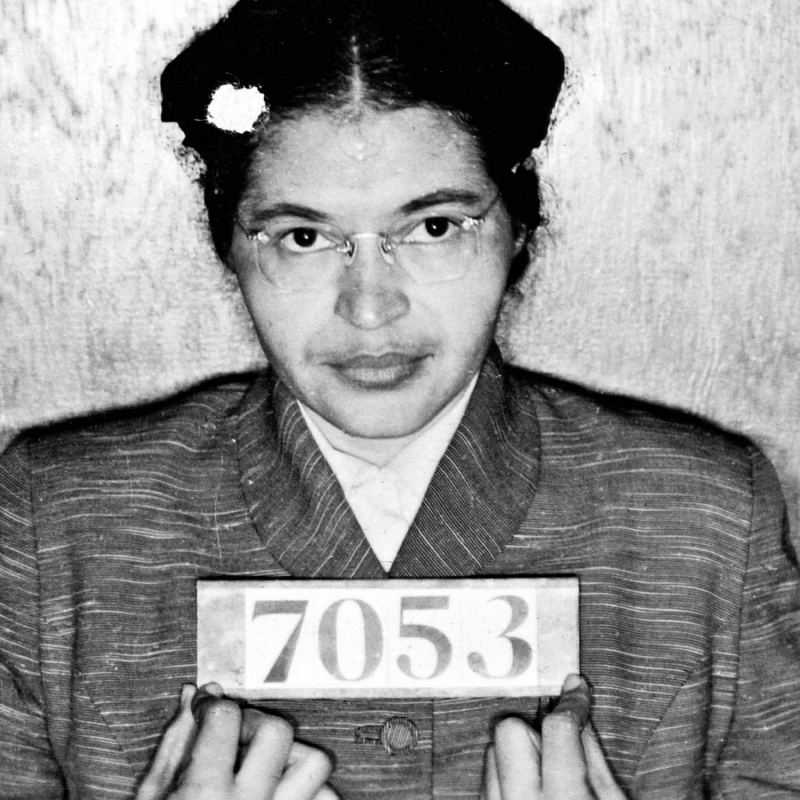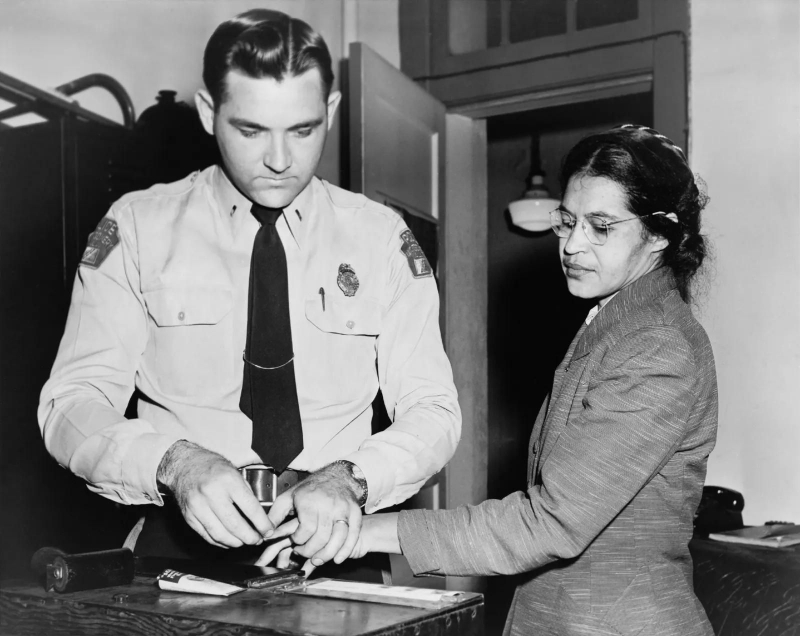Parks was arrested again a few weeks later for her role in the boycott
Parks served on the executive board of directors of the organization that organized the Montgomery Bus Boycott and worked as a dispatcher for a brief period, coordinating carpool trips for boycotters. On February 22, 1956, a grand jury indicted Parks and dozens of people for violating a state law prohibiting organized boycotting, just a few years after her historic arrest in 1955. Parks was detained along with 114 others, and The New York Times published a front-page photo of her being fingerprinted by cops.
The famous photograph of Parks being fingerprinted by a police officer was taken after her second arrest, though it is frequently misinterpreted as showing her first. The arrest provided a critical chance to gather media attention and extend the boycott's momentum.
Parks was fired from her department store job a few weeks after her arrest, even though the personnel officer told her it wasn't because of the boycott. Her husband resigned after being instructed that no talk of the boycott or his wife was permitted in the workplace. Parks received threatening phone calls and death threats throughout the boycott and afterward. She moved to Detroit with her husband and mother in 1957, where she spent the rest of her life working as an administrative aide for Congressman John Conyers, Jr.












